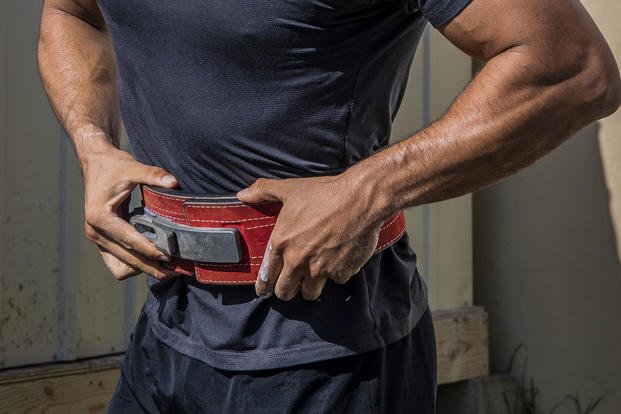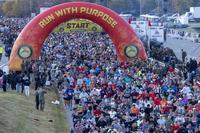There are obvious pros and cons to wearing a weight belt when lifting weights. The pros include potential injury prevention of the lower back during heavy lifts and some increased performance. The cons include that using them all the time can weaken core muscles and might interfere with full-body power creation when doing lifting movements.
Here is a question concerning weight belts, using some of my personal workouts designed for the tactical athlete:
First, it's great to have a new book ("Tactical Strength") fresh off the press to keep me motivated! I wanted to get your opinion of the use of weight belts when lifting. And I'm referring to following your workouts specifically. I realize that in Olympic/competitive powerlifting, they might be considered necessary.
I'm 45, and I guess my days of working in a tactical profession are behind me (Navy medic). Anyway, in my days in high school and the Navy (the late '80s and early '90s), we were the "weight belt generation" that put a belt on when we entered the gym and left it on. Little did we know we were actually weakening our core muscles by not letting them engage!
So, I haven't really used one in probably 15 years. Thank you for your input and again for everything you do for this country and for its future! And for your awesome books! Chris
Thanks, Chris. If you are following my workouts and using my recommended amounts (body weight for bench presses, 1.5-2 times your body weight for deadlifts and squats), I rarely recommend using a weight belt unless you feel you need one (nursing a back injury or the first time going heavy in a while).
With deadlifts and squats, weight belts are not really needed at first, with the progression starting fairly light, compared to your body weight. However, as the weight increases and the reps decrease toward a one- or two-rep max, there is nothing wrong with wearing a belt. I hardly ever wear a weight belt, but when I did a few weeks ago when going heavy with a weight that I struggled with the week before, it went up much easier, and my lower back had no issues at all.
To answer your question, it is up to you. Most of us do not wear weight belts, but we also are not trying to break any powerlifting world records.
Another option is to wear some sort of support around the stomach, such as one made of neoprene (SCUBA wetsuit) attached with Velcro. This option provides some stability, but it does not interfere with movement of lifts, such as hang cleans and push presses, where power creation travels from the ground to over your head. I like to use these for bear crawls, fireman carries and burpees as well. But once again, it's completely optional whether you need this support or not.
If you look around, you will find people who love them and those who do not. Find what works for you at your age and abilities.
Stew Smith is a former Navy SEAL and fitness author certified as a Strength and Conditioning Specialist (CSCS) with the National Strength and Conditioning Association. Visit his Fitness eBook store if you're looking to start a workout program to create a healthy lifestyle. Send your fitness questions to stew@stewsmith.com.
Want to Learn More About Military Life?
Whether you're thinking of joining the military, looking for fitness and basic training tips, or keeping up with military life and benefits, Military.com has you covered. Subscribe to Military.com to have military news, updates and resources delivered directly to your inbox.



















